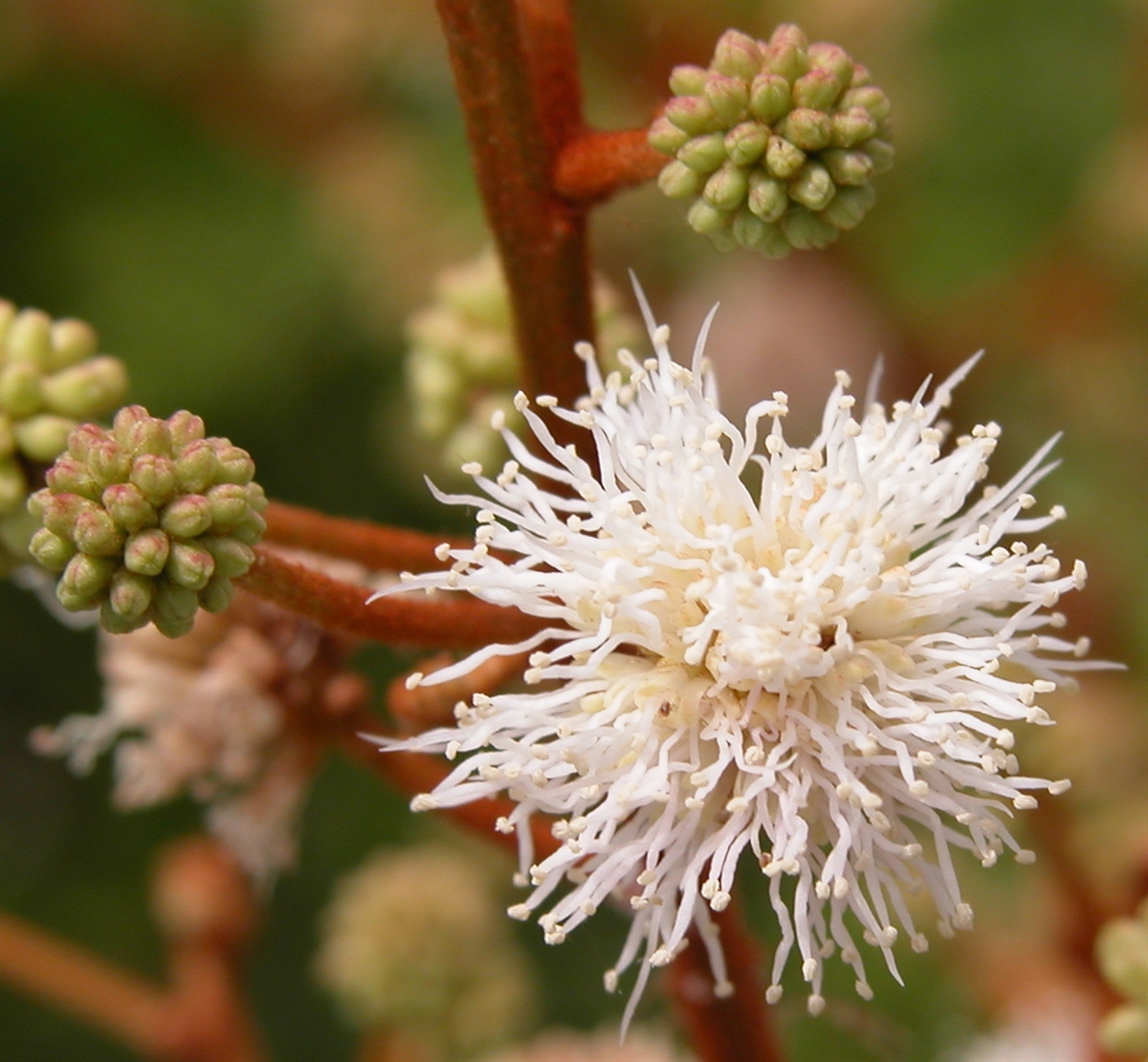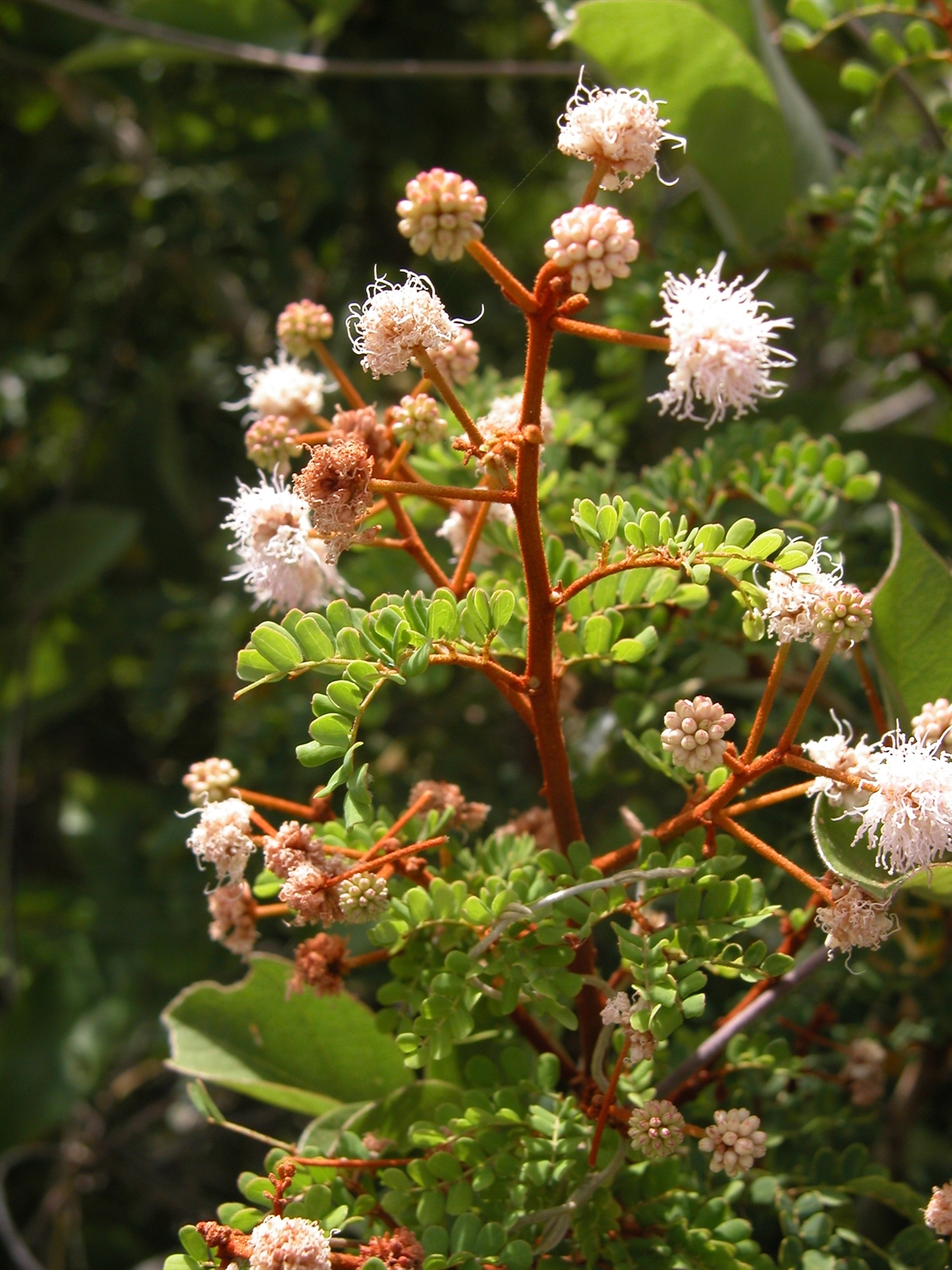Habit: Mimosa bahamensis grows as a large shrub to 4 m in height branches, stems and leaves with recurved prickles. The evenly bipinnate leaves are arranged alternately with 2 – 4 pairs of pinnae each with 2-6 pairs of leaflets. The leaflets are up to 6 mm in length, oval to obovate with an entire margin and rounded apex.
The complete, perfect, actinomorphic flowers are arranged in tight, axillary or terminal, globular heads with each flower subtended by a bract. There are 5 fused, pubescent, sepals in the calyx forming a shallow tube. There are 5 fused petals in the corolla forming a tube that exceeds the calyx. There are 8 pink showy stamens that are 2 times as long as the perianth. The ovary is superior with a single locule. The fruit is a flat legume, with constrictions between the seeds, that turns brown at maturity.
All vegetation including the inflorescence, flowers and fruit with dense brown pubescence.
Habitat: Mimosa bahamensis grows in Dry Broadleaf Evergreen Formations- Forest/Shrublands (coppice).
Distribution: Mimosa bahamensis occurs throughout the central and southern island groupings in the Lucayan Archipelago and Central America.
Medicinal/Cultural/Economic usage: Mimosa bahamensis is not known to be used medicinally in the Lucayan Archipelago.


